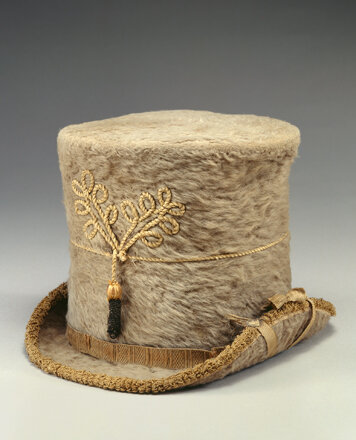
In 2001, Historic Deerfield acquired a rare woman’s riding hat [Figure 1]. Dating to about 1815, its accompanying riding suit, or habit, no longer survives. Nevertheless, it is an important object in the museum’s fashion and dress collection, helping to inform visitors today about conventions of female fashion and sport at the turn of the 19th century. The existence of a label with patriotic undertones inside the crown of the hat identifying David Whipple of Providence, Rhode Island, as the manufacturer, opened up intriguing questions about the man, his business, and the manufacture of women’s riding hats in the early nineteenth century [Figure 2].
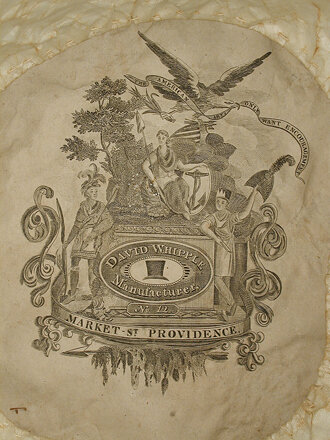
New research recently undertaken to contextualize the hat uncovered more about the life of Whipple, and his hat-related activities in Providence. The existence of a very similar riding hat, but with a Boston label, in the collection of Mount Holyoke College Art Museum’s Joseph Allen Skinner Collection raised additional questions about Whipple’s role as a manufacturer [Figure 3]. How could another example, so similar but with the label of another retailer from a larger New England city, be explained without raising the possibility that neither Whipple nor Peck actually made the extant hats in both collections?
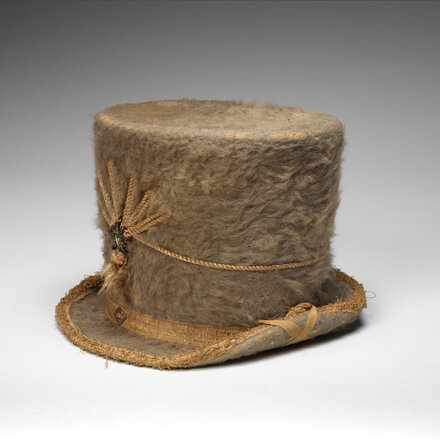
In this first of a two-part blog post, we explore the riding hat in Historic Deerfield’s collection, and its context in early 19th-century women’s fashion. The business records and personal history about David Whipple we uncovered yield a greater understanding of his professional life. A subsequent blog post will explore the name identified with the Mount Holyoke riding hat, John Peck, and the possibility that both Peck and Whipple were retailers of hats made by the Boston Hat Manufactory.
The Whipple Riding Hat
The riding hat was acquired by Historic Deerfield from a New England-area dealer in 2001. It is made from a bleached beaver fur. Beaver fur was a staple of high-quality hats for hundreds of years in European and European-American dress; in fact, it was one of the reasons for European settlement in the New World, and fostered a major trading initiative between European settlers in the northeast and Indigenous people. The underfur of beaver pelts was especially desired for its softness and ability to repel water. Beaver fur could also be dyed more effectively than inferior felt made from wool, and it was stronger.
Following English and European styling conventions for women’s riding dress, the appearance of Historic Deerfield’s hat mirrors fashionable men’s tall hats from the period, with a high crown encircled by a narrow brim. The headwear’s primary decoration consists of a center front design made of matching braided trim that is couched (or stitched down) onto the fur [Figure 4]. Two wooden spheres, covered in pink silk floss and terminating in 1”-long looped metallic tassels (one now missing), provided a spark of movement and embellishment to this central design. The ensemble worn with it would have included a jacket and skirt cut to accommodate its rider’s sidesaddle position on the horse.
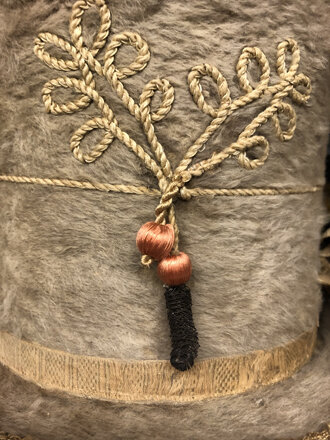
In addition to its rarity and overall stable condition, the importance of the riding hat is underscored by the presence inside the crown of a label announcing David Whipple of “No. 12 Market Street” in Providence, Rhode Island, as its maker. The inclusion of several allegories, including an American eagle and an anchor to symbolize Hope, enhance the label’s patriotic tone. The motto above the hat label’s illustration, “American Arts only want encouragement” further underscores patriotic sentiments, which may have been important to inhabitants of the Young Republic seeking self-sufficiency in manufactured goods as a result of an interruption of trade with Great Britain during the War of 1812.
David Whipple, “Manufacturer”
Descended from English immigrants who came to the colonies in the 17th century, David Whipple was born on December 5, 1771 in Providence. He was the son of George Whipple (1742 – 1784), of Cumberland, Rhode Island, and Sarah Corey (1742 – 1816), of Providence. David first married Eliza Kilton (1778 – 1820) on December 26, 1808, when he was 37 years old and she was 30. The couple had three children, all of whom died in childhood. Eliza died early, too, and Whipple married a second time to Julia Lee (1789 – 1837) on December 10, 1823. Sadly, Julia died at the age of 47 or 48, leaving David a widower again.
To date, no business records or newspaper advertisements have come to light to reveal more about Whipple’s professional life. However, in 1824, the inaugural publication of street directories in Providence listed Whipple’s retail “hat-store” business. Using these directories, Table 1 shows the addresses listed for David Whipple’s business and residence (City Directories, 1822-1895). From 1824 until 1843 or 1844, Whipple’s business was at 31 Market Street, a short street between the east end of Westminster Street (his place of residence for much of that time) and the Weybosset Bridge. Whipple’s store was in the thick of the downtown retail district [Figure 5]. By the age of 72, in 1843-1844, Whipple appears to have retired, as his business is no longer listed. He died in Providence on September 24, 1858 [Figure 6].

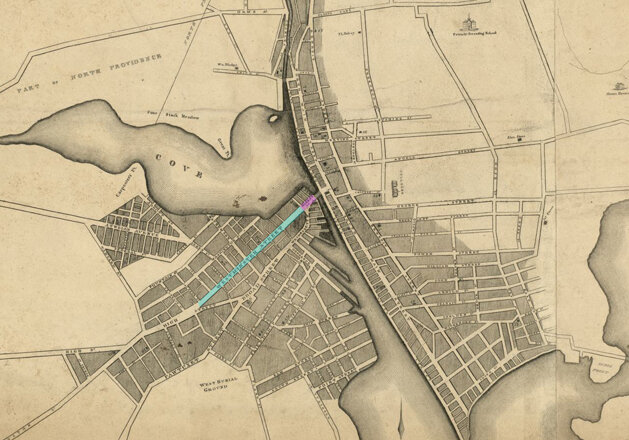
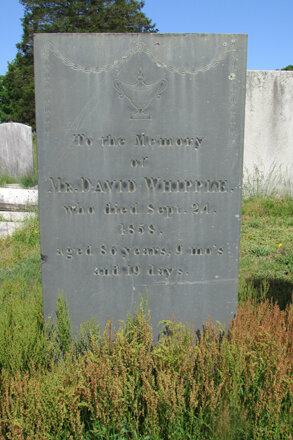
1858 aged 86 years, 9 mo’s and 19 days.”
Despite the moniker of “Manufacturer” on his label, Whipple’s business appears in Providence city directories as a retailer of hats. This fact, combined with the nearly identical hat in the collection of the Joseph Allen Skinner Museum, suggests another manufacturer who sold goods wholesale to retailers like Whipple. In part 2 of this post, another Historic Deerfield intern will lead the charge to explore the Joseph Peck hat, and begin the processing of identifying the possible maker of both.